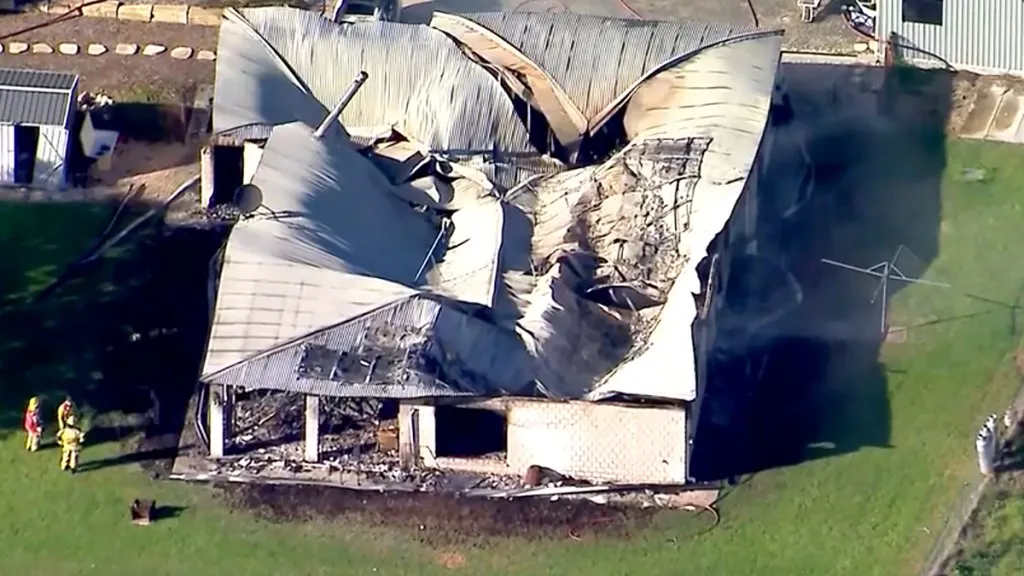Thousands flee tourism hotspot in face of continued quakes
Undersea earthquakes have triggered an emergency declaration on the Greek island of Santorini, forcing thousands to flee.
A state of emergency has been declared on Greece’s Santorini island after hundreds of undersea earthquakes have shaken the resort hotpot for nearly a week.
The emergency declaration on Friday (AEDT) followed a magnitude 5.2 tremor — the most powerful recorded since activity started on January 31.
Thousands of tourists and residents have fled the holiday island amid what seismologists hope is a “seismic swarm”.
Hundreds of quakes have been registered every few minutes in the sea between the volcanic islands of Santorini and Amorgos in the Aegean Sea since Friday, prompting authorities to shut schools and the small nearby islands of Ios, Amorgos and Anafi.
A tremor with a magnitude of 4.7 was recorded by the European Mediterranean Seismological Centre on the island where the most popular white and blue villages cling to cliffs over the sea.
Seismologists estimate the intense seismic activity could take days or weeks to abate, and people are advised to stay out of coastal areas due to the risk of landslides and avoid indoor gatherings.
“Everything is closed. No one works now. The whole island has emptied,” said Dori, an 18-year-old resident who boarded the ferry to Athens.
You might like
George Kaviris, director of the seismological laboratory at the University of Athens, told German broadcaster Deutsche Welle that the region had been rocked by ongoing, low-level tremors since June 2024.
“We have seen more than 2300 earthquakes and many of them — over 45 now — have a magnitude over 4, which is a phenomenon that is very seldom,” Kaviris said.
Two scenarios
While seismologists have been unable to predict the eventual ramifications of the quakes, it is thought that there are two likely scenarios.
“The first is that this could be a ‘seismic swarm’,” Kaviris said.
Seismic swarms, or clustered seismic events, are collections of ongoing tremors that people can feel, but are not particularly destructive to buildings and infrastructure.
“This [scenario] is optimistic and the one that we hope,” he said.
Kaviris said the second scenario is that the moderate tremors could be a precursor to a larger earthquake with a greater risk of destructive impact.
Stay informed, daily
Local authorities have restricted access to some high-risk areas, while emergency crews, vessels and a helicopter are on alert.
“The whole state mechanism has been activated … so that we are ready for any possibility with the hope that things will get better and the phenomenon will decrease in intensity,” Greek Prime Minister Kyriakos Mitsotakis said this week.

Santorini is a major destination for Australian tourists. Photo: Getty
Tourism hotspot
Santorini, one of the most popular Greek island destinations for Australian travellers, has felt the strain of over-tourism since borders reopened post-Covid.
Since the tremors began, most tourists have left and it is thought that only a few thousand of the estimated 15,000 residents remain on the island.
Australians make up a large proportion of Greece’s tourists, with 289,000 travelling to the country in 2023.
A survey conducted by Greek Tourism Ministry found Santorini was one of the top-three Greek Island destinations for Australians.
Greece is one of the most earthquake-prone countries in Europe, sitting on the junction of the African and Eurasian tectonic plates whose constant interaction prompts frequent quakes.
Santorini took its current shape following one of the largest volcanic eruptions in history, around 1600 BC. The last eruption in the area occurred in 1950.
– with agencies




